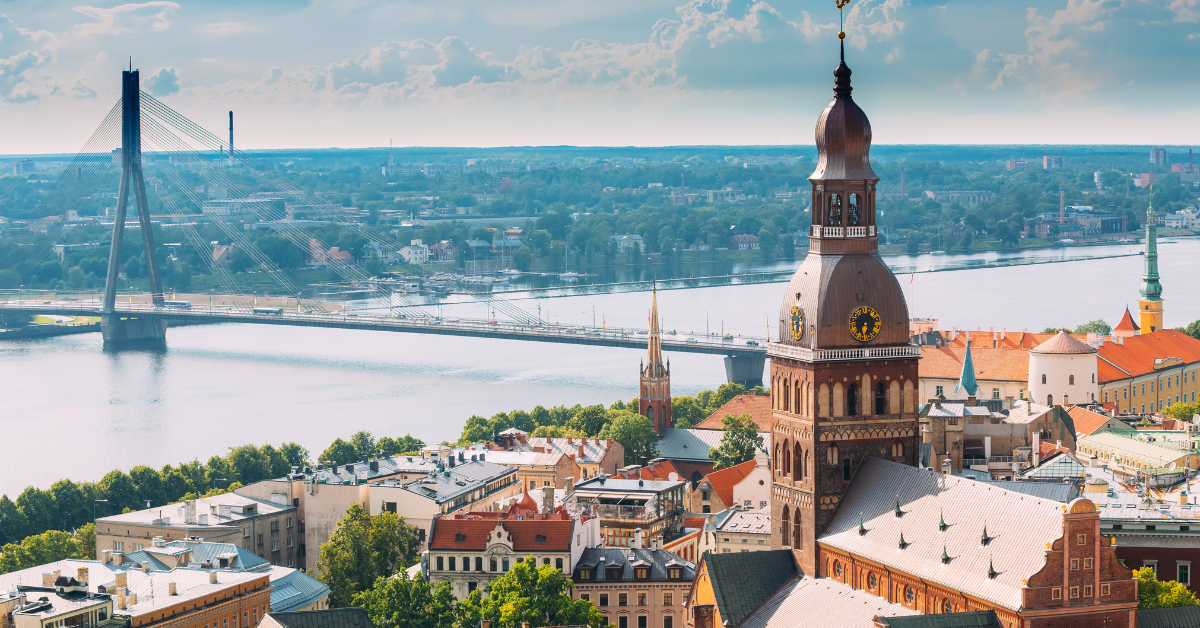Latvia is one of the Baltic states and was once written in Kanji as “良都美野” or “良斗美亜.” Today, however, it is generally written in Katakana as “ラトビア.” This article explores the background of these notations and examines the impressions Japanese people have of Latvia.
The Origin and Meaning of Latvia’s Kanji Notation
The Kanji renderings of Latvia were created from the Meiji to early Showa period as part of the effort to adapt foreign place names into Japanese. When converting foreign names into Kanji, priority was placed on sound rather than meaning, resulting in forms like “良都美野” and “良斗美亜.”
| Kanji Form | Reading | Feature |
|---|---|---|
| 良都美野 | Ratobia | Aesthetic phonetic transcription, meaning “beautiful city and rich fields” |
| 良斗美亜 | Ratobia | A form emphasizing a Western, continental impression |
| 拉脫維亜 | Ratobia | A notation derived from Chinese transcription |
These were never official names but phonetic representations. Today, they are no longer used in everyday contexts, with the standardized Katakana form “ラトビア” prevailing.
Why Kanji Notation Fell Out of Use
After World War II, as Japan’s internationalization advanced, foreign place names were standardized into Katakana to avoid confusion. In international conferences and sporting events, consistency was essential, and the Baltic states, including Latvia, adopted Katakana forms exclusively.
Thus, Kanji renderings survive mainly in historical documents or as cultural curiosities, rather than in practical usage.
The Image Japanese People Have of Latvia
Although Latvia remains a relatively unknown country in Japan, impressions are gradually taking shape through three major aspects: nature, history, and culture.
| Aspect | Main Japanese Impression | Actual Feature |
|---|---|---|
| Nature | A country of forests and lakes | Nearly half the land is forested, earning it the nickname “land of forests and lakes” |
| History | Preserved medieval towns | Riga’s Old Town is a UNESCO World Heritage Site |
| Culture | Rich in song and dance | Famous for the nationwide “Song and Dance Festival” |
Thus, Latvia is seen by many Japanese as a “quiet and beautiful country.”
Latvia Through Sports
Sports provide another way to understand Latvia. Ice hockey is considered the national sport, with Latvia recognized internationally as a strong competitor. Basketball and track and field are also popular, with Latvian athletes making appearances on the global stage.
| Sport | Popularity in Latvia | Japanese Impression |
|---|---|---|
| Ice Hockey | Very high | Seen as a national sport |
| Basketball | High | Known for producing NBA players |
| Track & Field / Beach Volleyball | Moderate | Respected for world-class athletes despite being a small nation |
Latvia projects the image of a “small country with the strength to compete globally,” a quality many Japanese admire.
Japan–Latvia Relations
Japan and Latvia reestablished diplomatic relations in 1991, and since then, exchanges in economy and culture have developed. In recent years, ties in tourism and education have also grown.
| Field | Japanese Perception | Actual Exchange |
|---|---|---|
| Tourism | Northern European-like scenery and towns | Riga’s Old Town, seaside resort of Jūrmala |
| Culture | Music and dance | Song and Dance Festival, performances in Japan |
| Sports | Strong in winter sports | International competitions in ice hockey and basketball |
| Economy | Viewed as a small, lesser-known country | Cooperation in IT and timber exports |
Attractions of Latvian Tourism
Tourism offers the most accessible way for Japanese people to experience Latvia. Riga, the capital, is a treasure trove of Art Nouveau architecture, preserving a medieval European atmosphere.
Jūrmala, a seaside resort on the Baltic coast, attracts visitors in summer, while castles and monasteries scattered across the countryside provide opportunities for historical exploration.
Latvian Cuisine
Latvian cuisine is characterized by simple dishes that make use of natural ingredients. Potatoes, rye bread, and dairy products form the foundation of meals, making the cuisine approachable for Japanese tastes.
| Dish | Feature | Japanese Impression |
|---|---|---|
| Rye Bread (Black Bread) | Sour, hearty bread made from rye | Popular among health-conscious people |
| Soups | Mild flavors using vegetables and fish | Reminiscent of Northern European cuisine |
| Dairy Products | Wide variety of cheeses and yogurts | Seen as natural and wholesome |
Experiencing Latvian food provides Japanese travelers with a deeper connection to the nation’s culture and traditions.
Conclusion
The Kanji renderings of Latvia, such as “良都美野” and “良斗美亜,” were once phonetic transcriptions but are no longer in use today. For Japanese people, Latvia is increasingly recognized for its natural beauty, medieval towns, rich cultural traditions, and impressive achievements in sports.
While Latvia’s name may not yet be widely known in Japan, exchanges in tourism, cuisine, and sports are transforming its image from a “distant country” into a “country worth visiting.” As ties deepen, Latvia’s charm will likely become better understood and appreciated.






